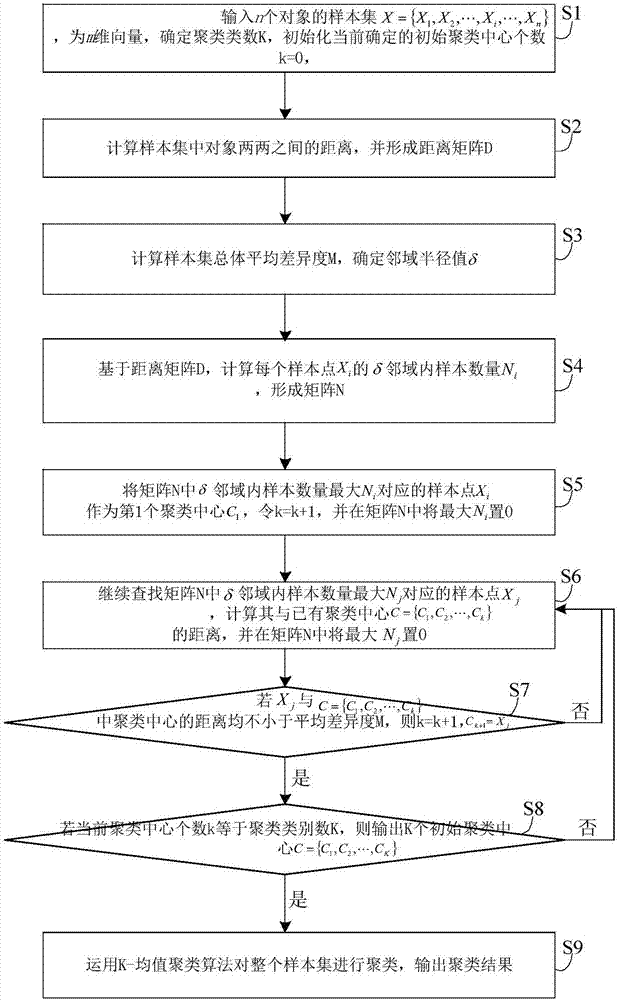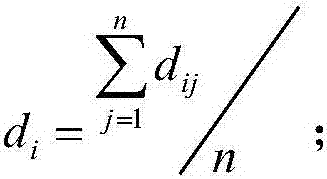K-means initial clustering center optimization method on basis of neighborhood information and mean difference degree
A technology of initial cluster center and neighborhood information, applied in character and pattern recognition, special data processing applications, instruments, etc. It can overcome problems such as low rate and achieve the effect of overcoming the sensitivity of outliers, overcoming blindness and randomness, and improving the accuracy rate and stability.
- Summary
- Abstract
- Description
- Claims
- Application Information
AI Technical Summary
Problems solved by technology
Method used
Image
Examples
Embodiment Construction
[0026] In order to further illustrate the features of the present invention, please refer to the following detailed description and accompanying drawings of the present invention. The accompanying drawings are for reference and description only, and are not intended to limit the protection scope of the present invention.
[0027] Such as figure 1 As shown, this embodiment discloses a K-means initial cluster center optimization method based on neighborhood information and average difference degree, including the following steps:
[0028] S1. Input the sample set X={X of n objects 1 , X 2 ,...,X i ,...,X n},X i Be an m-dimensional vector, determine the clustering number K, and initialize the currently determined initial clustering center number k=0;
[0029] S2. Calculate the distance between two objects in the sample set, and form a distance matrix D;
[0030] S3. Calculate the overall average difference degree M of the sample set, and determine the neighborhood radius v...
PUM
 Login to View More
Login to View More Abstract
Description
Claims
Application Information
 Login to View More
Login to View More - R&D
- Intellectual Property
- Life Sciences
- Materials
- Tech Scout
- Unparalleled Data Quality
- Higher Quality Content
- 60% Fewer Hallucinations
Browse by: Latest US Patents, China's latest patents, Technical Efficacy Thesaurus, Application Domain, Technology Topic, Popular Technical Reports.
© 2025 PatSnap. All rights reserved.Legal|Privacy policy|Modern Slavery Act Transparency Statement|Sitemap|About US| Contact US: help@patsnap.com



